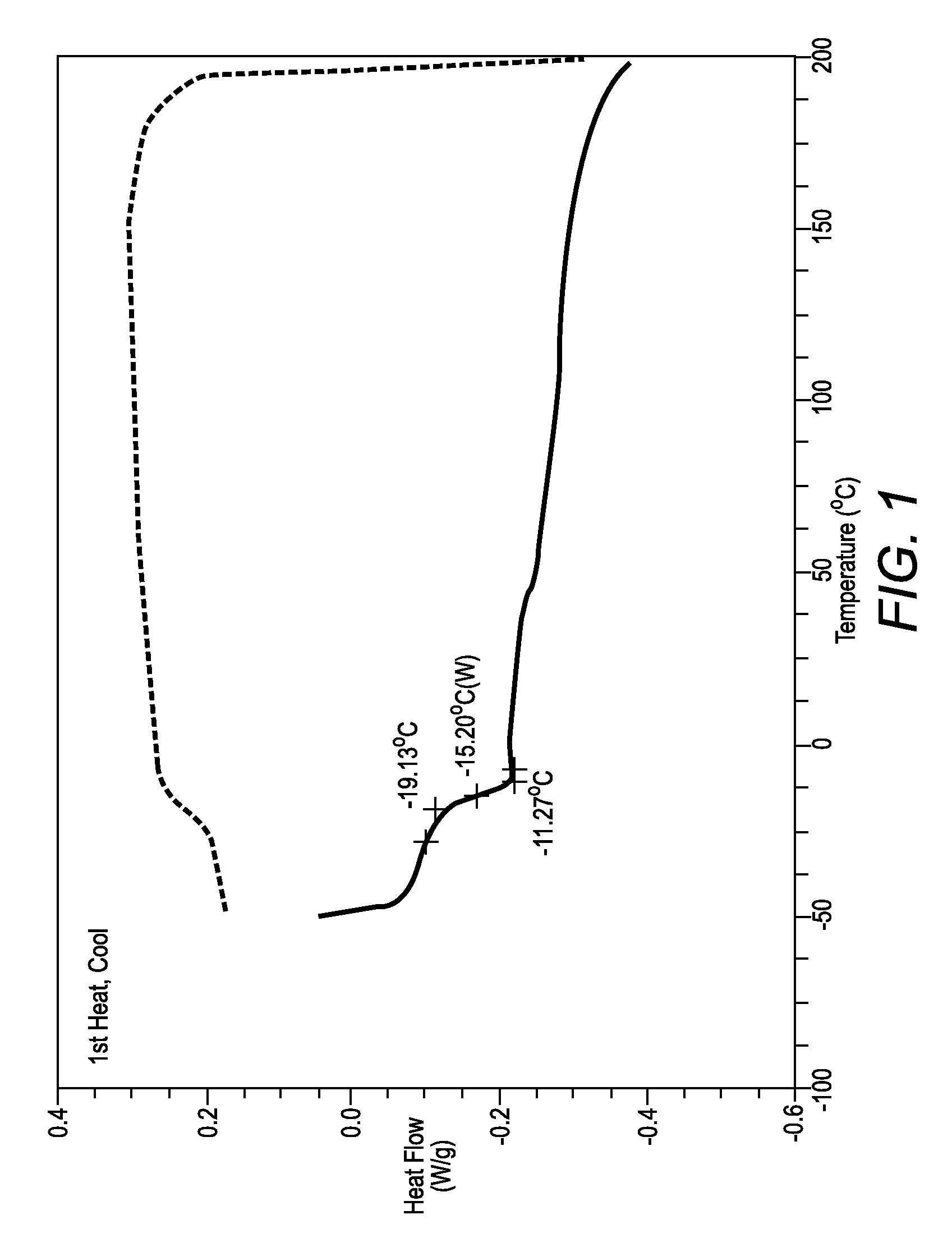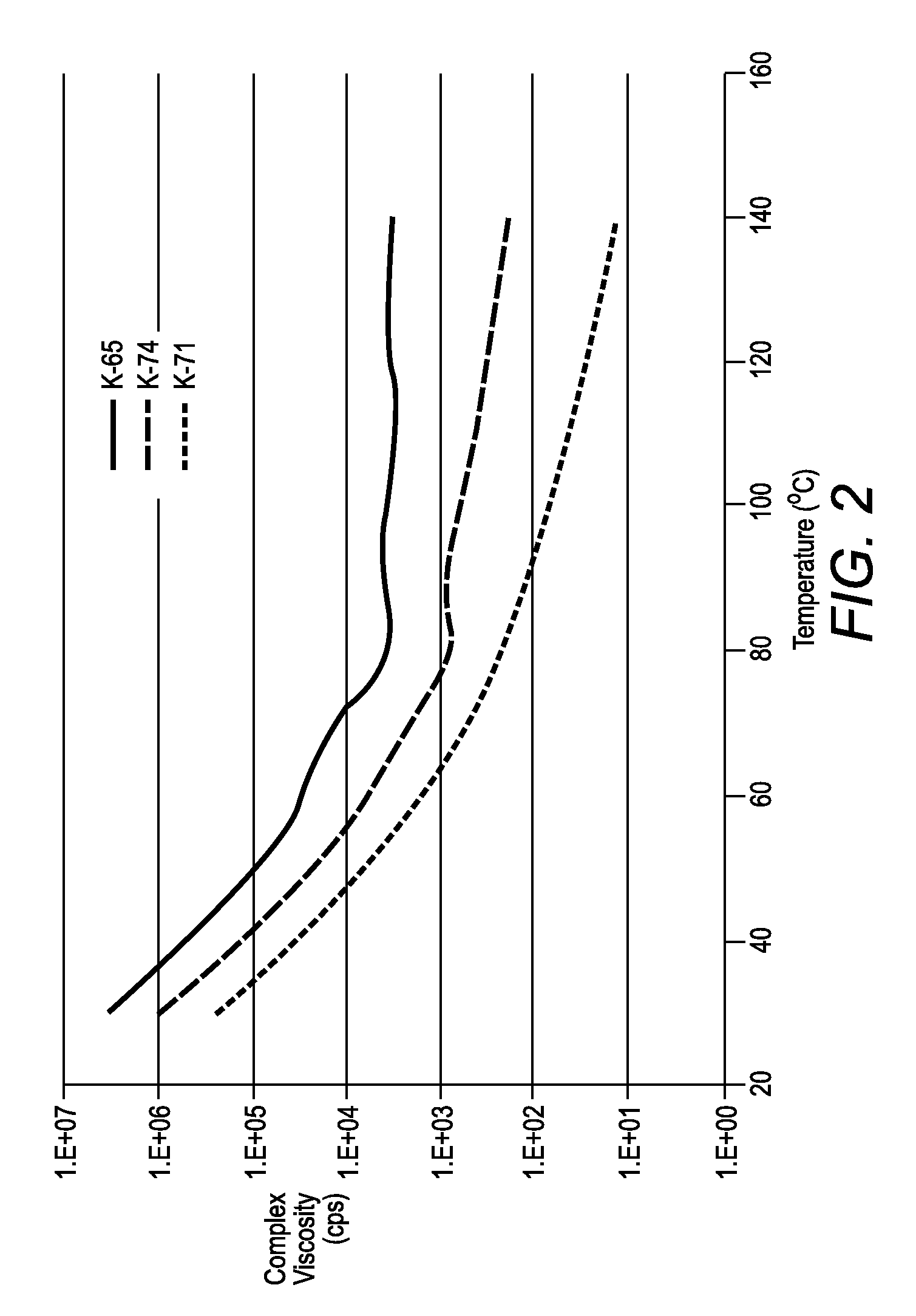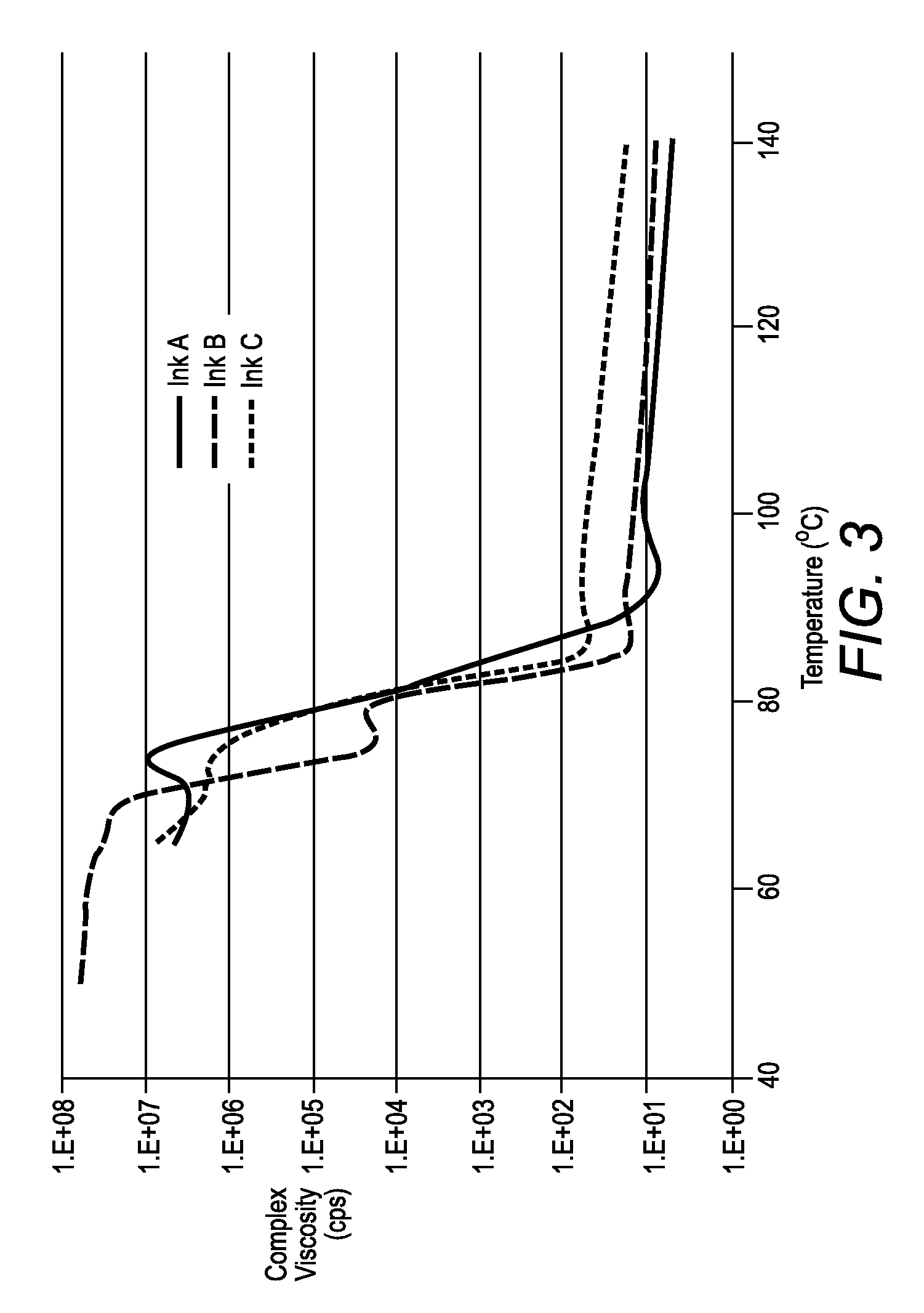Mixtures of ester of tartaric acid and ester of citric acid as amorphous materials for phase change inks
a technology which is applied in the field of mixing of ester of tartaric acid and ester of citric acid as amorphous materials for phase change inks, can solve the problems of unsatisfactory coating substrate technology
- Summary
- Abstract
- Description
- Claims
- Application Information
AI Technical Summary
Benefits of technology
Problems solved by technology
Method used
Image
Examples
example 1
Synthesis of Amorphous Materials
[0061]
[0062]The amorphous materials according to certain embodiments of the present disclosure can be synthesized according to Scheme 2. Esterification reactions between an alcohol and a mixture of L-tartaric acid and citric acid were conducted via a simple one-pot reaction. Cyclohexanol was reacted in various ratios of the acids (i.e., L-tartaric acid and citric acid) to form the corresponding esters. The physical properties of the resulting esters are shown in Table 1.
[0063]
TABLE 1L-tartaricCitric acidAcidViscosity @Sampleacid ratio xratio ynumberTg140° C.ID(mol %)(mol %)(mgKOH / g)(° C.)(cps)K-6875252.27−13ND*K-7160404.06−1413K-7455455.48−12198K-65505011.76−113425K-66257513.41−15ND**ND—not determined
example 2
Synthesis of Sample K-71
[0064]In a 500 mL flask, equipped with a Dean-Stark trap, L-tartaric acid (12.0 g, 80 mmol), citric acid (10.24 g, 53.3 mmol), cyclohexanol (32.0 g, 320 mmol), and xylene (200 ml) were added to give a suspension. p-Toluenesulfonic acid monohydrate (0.61 g, 3.2 mmol) was added and the mixture was refluxed for 3 hours with azeotropic removal of water. The reaction mixture was cooled down to room temperature and washed with NaHCO3 aq. (1×) and brine (1×), then dried over MgSO4. After filtration and removal of the solvent, the residue was dried under vacuum with stirring at 100° C. to obtain 34.0 g (yield: 70.2%) of amorphous solid. 1H NMR indicated that the desired product was formed.
[0065]Samples K-68, K-74, K-65 and K-66 were prepared according to the same procedure described as in synthesis of sample K-71, except for changing the amounts of L-tartaric acid and citric acid according to the mol % ratio indicated in Table 1.
example 3
Material Properties
[0066]FIG. 1 shows differential scanning calorimetry (DSC) data of sample K-71. The DSC data shows the glass transition temperature (Tg) of sample K-71 to be −14° C., and no crystallization peak is recorded, which indicates that the material is an amorphous solid. As shown in Table 1, the other samples also showed glass transitions, which is a characteristic of amorphous solids.
[0067]The rheology of sample K-71 was measured, and shown in FIG. 2, using an RFS3 controlled strain Rheometer (TA instruments) equipped with a Peltier heating plate and using a 25 mm parallel plate. The method used was a temperature sweep from high to low temperatures, in temperature steps of 5° C., a soak (equilibration) time of 120 seconds between each temperature and at a constant frequency of 1 Hz.
[0068]The rheology curve of sample K-71 has relatively low viscosity (100° C.), but very high viscosity (>105 cps) at room temperature. Samples K-65 and K-74 had higher viscosities than sampl...
PUM
| Property | Measurement | Unit |
|---|---|---|
| glass transition temperature | aaaaa | aaaaa |
| glass transition temperature | aaaaa | aaaaa |
| temperature | aaaaa | aaaaa |
Abstract
Description
Claims
Application Information
 Login to View More
Login to View More - R&D
- Intellectual Property
- Life Sciences
- Materials
- Tech Scout
- Unparalleled Data Quality
- Higher Quality Content
- 60% Fewer Hallucinations
Browse by: Latest US Patents, China's latest patents, Technical Efficacy Thesaurus, Application Domain, Technology Topic, Popular Technical Reports.
© 2025 PatSnap. All rights reserved.Legal|Privacy policy|Modern Slavery Act Transparency Statement|Sitemap|About US| Contact US: help@patsnap.com



